Top of Foot Pain Is The Foot Problem No One Talks About — Doctors Reveal How to Outsmart It
Relief is easier than you'd think! Just ask Kelli Austin, 63, who's pain-free thanks to the right foot soak
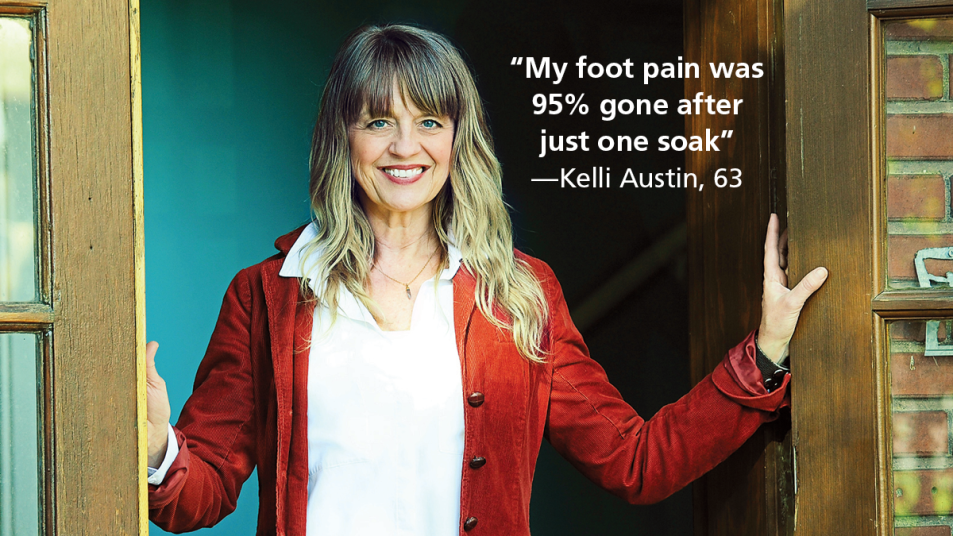
If you’ve ever experienced a sharp pain in or across the top of your foot, you know it is impossible to ignore. While foot pain is a leading cause of immobility and inactivity, many people underestimate the importance of being able to walk with ease — until foot pain disrupts their ability to get around with ease. Read on to learn about the most common causes of top of foot pain, plus the home remedies that soothe discomfort.
What causes top of foot pain?
Fit feet help with balance, stability, and alignment. Yet more and more women over 40 seem to be seeking help for foot pain, according to Elizabeth Reilly, DPM, associate clinical professor at Stanford University Medical School. “Lately we see so many women come in with foot and ankle pain,” says the podiatrist.
Top of foot pain can feel like an aching that develops gradually, or it can manifest as a sharp pain at the top of your foot that come on suddenly. You may also notice swelling at the top of your foot, stiffness or pain that increases with activity. Some of the top culprits of this ache-inducing condition:
1. Osteoarthritis
With 26 bones, 33 joints, and more than 120 muscles, ligaments, tendons, and nerves, each foot presents a slew of opportunities for mishaps and malfunction. One of the most common problems is osteoarthritis, which is also known as “wear and tear” or degenerative arthritis. It often develops slowly, causing pain and stiffness that worsen with time. When cartilage in the joint wears away, it frays, shrinking the protective space between bones. This results in bone-on-bone friction.
“Arthritis symptoms may wax and wane,” in early stages, says Natalie R. Danna, MD, assistant professor of orthopedics at the University of Maryland School of Medicine and an orthopedic surgeon at the University of Maryland Medical Center. Sharp pain that comes and goes may seem to occur sporadically.
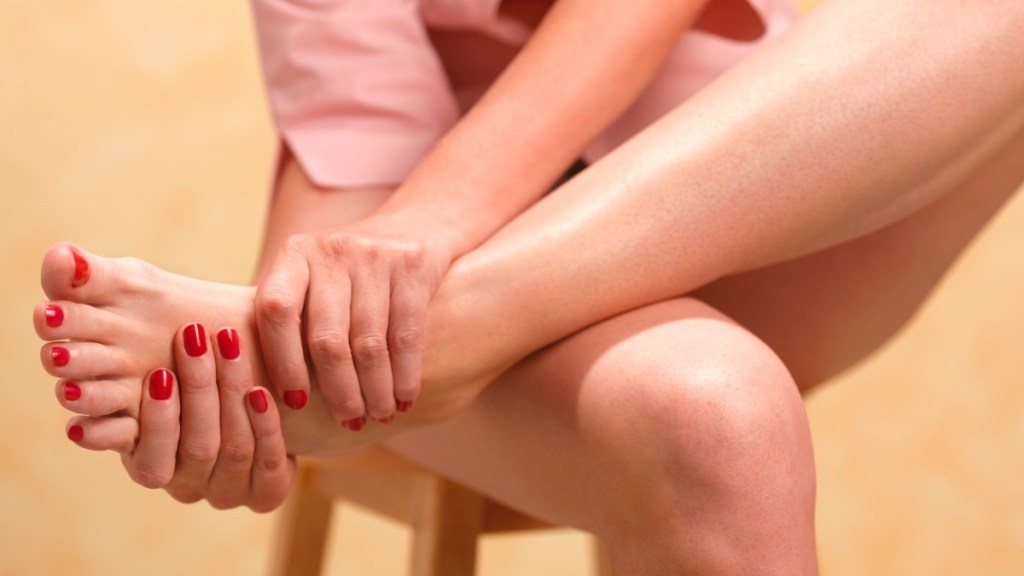
2. Going barefoot
“I break a lot of hearts when I tell women in my clinic to avoid going barefoot, but it is not in your best interest,” Dr. Reilly says. It may sound surprising, but she explains that forgoing shoes (even at home) puts too much stress on the feet. Without structural support and protection, women’s feet are more susceptible to painful, age-related foot problems.
3. Tendonitis
Tendons, the soft connective tissue that allow joints to move, tend to lose elasticity with age. That means it’s easier to aggravate them over time. Extensor tendons, located along the top of your foot, help you lift your foot and flare your toes. When the tendons get irritated or inflamed, it is called extensor tendonitis.
“The foot is an incredible machine,” says Reilly, but when one part weakens, other parts compensate, which can quickly lead to soft tissue overuse and irritation such as tendonitis. Foot tendonitis is considered an overuse injury, and it’s often a result of repetitive movements or over-stretching.
When to see a doctor
If top of foot pain persists after a few days, consider consulting your doctor. “Don’t be shy or feel embarrassed,” says Dr. Reilly, who notes that foot pain is a quality-of-life issue. “If it impairs any activity, especially an activity you enjoy, see a provider.”
To diagnose your foot problem, a doctor will examine your feet and may order x-rays or other imaging. “It is important that these are weight bearing x-rays that show your feet and ankles while you are standing,” advises Dr. Reilly.
Tip: People with diabetes should discuss foot pain or swelling with their doctor. When you’ve lost some ability to feel nerve pain, you may not notice a foot problem until it has advanced.
No matter the cause of your top of foot pain, these simple remedies can provide noticeable relief.
How to prevent top of foot pain: Cushion the bottom
It seems counterintuitive, but supporting the bottom of the foot with cushioned footwear or insoles helps relieve pain on the top of the foot. “From the ground up, we can prevent many injuries by taking good care of our feet,” says licensed acupuncturist and physical therapist Eileen Li, PT, DPT, L.Ac. She notes that our feet are vulnerable due to their complex structure and constant weight-bearing. “Think about what we put feet through everyday. Their direct contact with the ground and exposure to uneven surfaces, poor footwear choices, and overuse in activities or prolonged standing also contribute to the risk of injuries,” notes Li.
One smart move is replacing sneakers regularly and avoiding tight-fitting footwear. Dr. Reilly also advises slipping on comfortable, supportive shoes while at home. Her pick: Hoka Ora Recovery Slides (Buy from Dick’s, $59.99). Slipping a pair of supportive insoles into your shoes can help ease pressure and pain, too. Dr. Reilly likes Fulton The Classic Insole (Buy from Fulton, $48). (Prefer more options? Click through to see some of the best insoles for foot pain.)
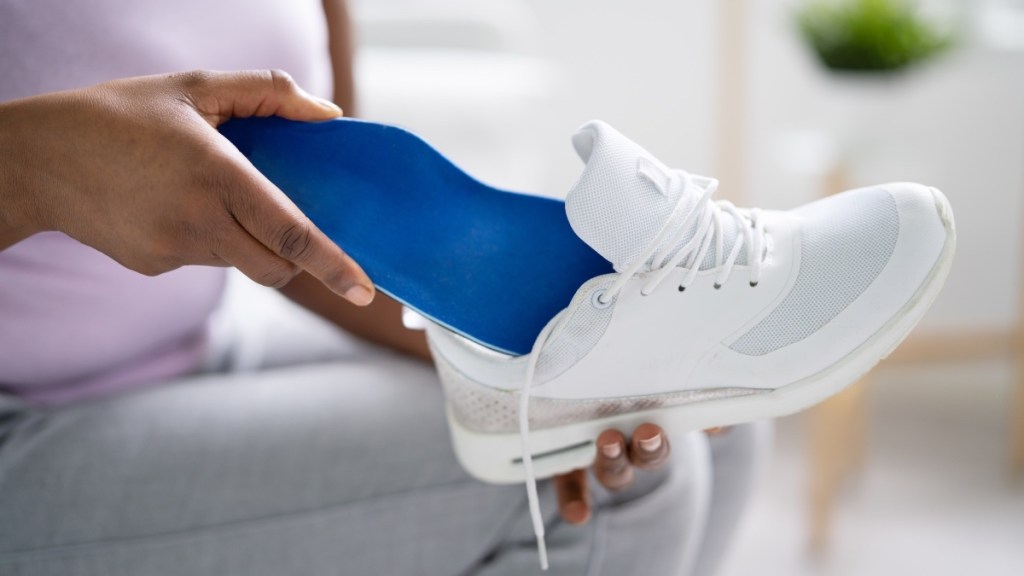
How to soothe top of foot pain
1. Elevate your feet
When top of foot pain strikes, grab a cozy spot on the couch and put your feet up. “Rest and elevate your feet so that your toes are level with your nose,” Dr. Danna says. Lying down and positioning your feet higher than your heart, ideally for 30 to 60 minutes, eases pain and swelling.
2. Draw a warm foot soak
Soaking your feet after a long day feels oh-so-good. And it turns out it’s one of the best natural remedies for top of foot pain. A powerful, painkilling combo: warm water and Epsom salts. “Warm water is soothing and Epsom salts can stimulate circulation,” Li explains.
Epsom salts brim with magnesium, a mineral that eases osteoarthritis pain and improves blood flow, while warm water relaxes tense muscles that can trigger top of foot pain. The best part: You can tailor your soak to your needs. Adding analgesic lavender oil tames pain, and ingredients like ginger ease inflammation. (Click through to learn how soaking your feet can help you remove an ingrown toenail, too.)
Eileen Li’s soothing foot soak
This quick and easy foot bath from Eileen Li tamps down top of foot pain.
- Fill a large bowl or basin with hot water
- Grate or chop about 1/2 of a ginger bulb (about 1-2 Tbs. fresh ginger) into the hot water. Steep for 5-10 minutes, then let it slightly cool to a comfortable temperature
- Add ½ to 1 cup Epsom salt per gallon of water, making sure the salt fully dissolves
- Soak feet for 10-15 minutes
Tip: Extra Epsom salts left over? Click through to see 10 brilliant uses for Epsom salts.
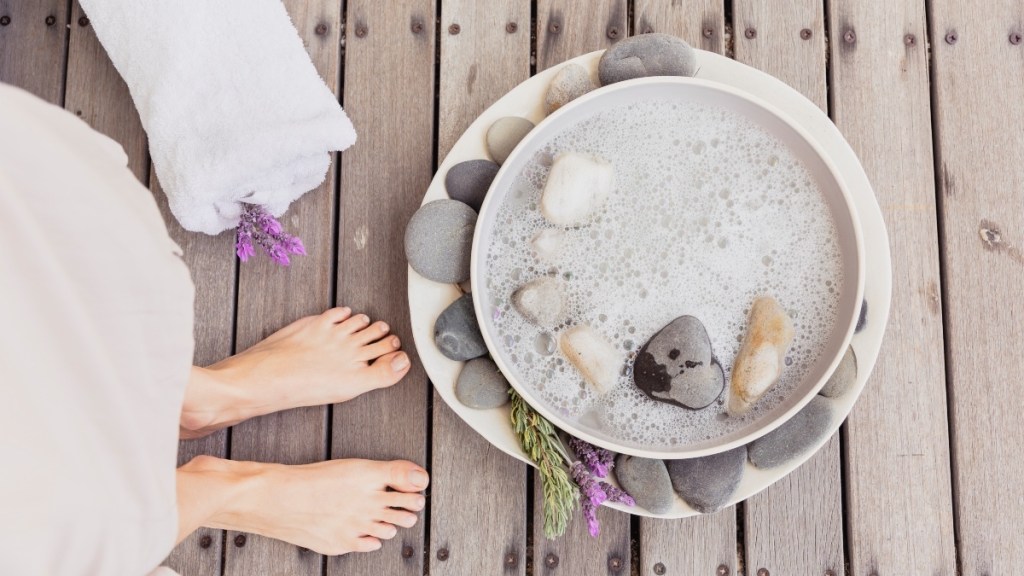
More natural ways to tame arthritis pain
While osteoarthritis can manifest as foot pain, it can also trigger achy hands, knees, hips, neck and lower back. Wherever your pain strikes, these natural arthritis remedies can help.
The best supplement for osteoarthritis
Turmeric, a golden-hued Indian spice, is a potent pain reliever. It contains curcumin, a compound that research suggests blocks pain-triggering enzymes. It works so well, research in the journal Trials found it lowers joint pain by as much as 70% within six weeks. To get the study-proven benefits, aim for400 to 500 mg. of BMC-95, a highly absorbable form of curcumin daily. One to try: Life Extension Super Bio-Curcumin (Buy from Amazon, $25.65).
The best lifestyle tweak for osteoarthritis
Turn on the classical music! Especially if you’ve just taken an ibuprofen. The reason? The music enhances pain-relieving effects, say researchers in Frontiers in Neurology. In their animal study, mice given ibuprofen for arthritis pain while listening to Mozart had a 93% greater reduction in pain response compared to mice not exposed to the music. The study authors say listening to music may boost the production of a protein in the brain (called BDNF) that inhibits pain sensitivity. And they note that standard anti-inflammatories alone do not produce such a quick response.
The best topical for osteoarthritis
Try an olive oil rub. Compounds in the oil help tame inflammation and reduce arthritis pain when massaged into sore spots for 5 minutes twice daily. It works so well, research in the Journal of Clinical Rheumatology found it’s even more effective than topical medicated prescription NSAID gel piroxicam. To get the perks, simply massage 1 tsp. of the oil into your feet or sore joints until absorbed; repeat daily.
Top of foot pain success story: Kelli Austin, 63

“Ouch!” Kelli Austin, 63, cried as a sharp pain shot through the top of her foot. That’s excruciating…what did I do to my foot? Thinking it over, Kelli retraced her steps. Living near downtown Kansas City, Missouri, one of her favorite things to do was walk around the city. Maybe the hard concrete somehow caused a stress fracture?
After an x-ray, however, Kelli was puzzled. Her foot was perfectly fine, at least according to the imaging, and it showed no redness or swelling. Strange, Kelli thought, hoping the pain would go away, which it did. But unfortunately, it didn’t stay gone for long. Suddenly, Kelli was beset by a sharp recurring pain in her foot that would sporadically arise when she least expected it.
She could be anywhere, at any time, and Kelli would find she just couldn’t walk for the agony. Sidelined and unable to even stand, she noted the commonalities between each flare: a sharp, localized pain that got worse with pressure and that forced her to keep her foot elevated most of the time. Stranger still, after a period of one or two weeks, the pain would go as quickly as it came.
But one day, Kelli noticed that the pain was beginning to spread to one hand at a time, just like in her feet. As she was getting ready for a party, the sudden, excruciating pain caused her to cancel last minute. Kelli had had enough. I have to figure out what this is and fix it for good!
How Kelli discovered the cause of her top of foot pain
A chiropractor by profession, Kelli quickly eliminated gout as a potential cause. As a vegan, she had not consumed animal products for over a year. Her blood work showed no sign of rheumatoid activity.
Puzzling through the other possibilities, Kelli scanned her body. She had scoliosis, which resulted in a permanently twisted pelvis and a right short leg. No matter how much adjusting I get, I’m always going to be a little off-kilter. Maybe thats created stress on my right foot, she wondered. And soon it was confirmed: Kelli had osteoarthritis.
Armed with a diagnosis, Kelli began looking for ways to relieve her pain. At each flare, Kelli would make sure to wear fluffy slippers to avoid any pressure at the top of her foot, which helped her at least get through her day. She also tried OTC pain medication. And while each remedy helped a little, none of them made the pain go away completely.
What about natural treatments? Kelli wondered. In her job, she instinctively sought out those types of remedies and was a voracious reader on topics of alternative healing and nutrition. But one day, while perusing two of her favorite books — A Cancer Battle Plan Sourcebook by David J Frahm and Healthy Healing by Linda Rector-Page, PhD — something caught Kelli’s attention.
The soak that finally soothed Kelli’s top of foot pain
It was recipe for a soothing soak, one she’d even recommended to her patients before. But she had never considered it for her own pain. “What are the odds that it would work?” she thought. “If Aleve, won’t help, I can’t imagine soaking my foot will make a difference.”
Still, she decided, she had nothing to lose by trying. Filling a foot bath with hot water, Kelli added 1 cup of Epsom salt, 1 cup of baking soda, 1 cup hydrogen peroxide and 12 drops of lavender oil. Then she soaked her feet for 20 minutes. The Epsom salts provide magnesium to relax muscle tissue while the baking soda removes inflammatory toxins. And the peroxide sends oxygen into the body while the lavender works as an antibacterial and a relaxant.
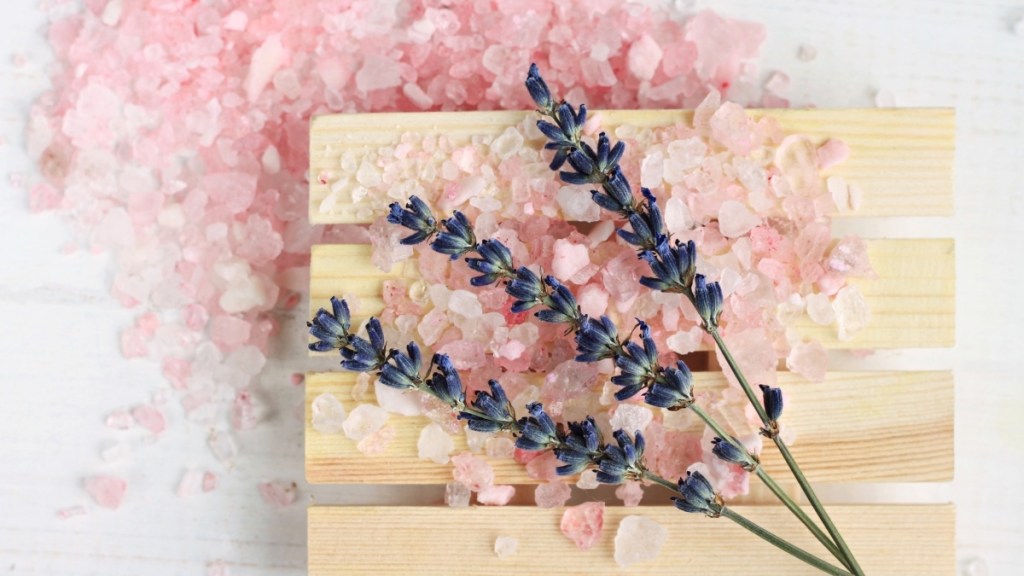
As she relaxed, Kelli almost forgot her feet were in the bath…until she took them out and stood up. Expecting an “ouch” moment, she was shocked to find that she felt almost no pain. “The pain was 95% gone,” she says. “And when I did the soak the second day, I was completely pain-free. Now, I do the soak three days a week. My feet don’t hurt for the first time in I don’t know how long!” Kelli beams. “I’m so grateful to have this inexpensive remedy at the ready to use whenever I need it!”
For more ways to keep your feet healthy and pain-free:
The Best Way To Dodge Foot Pain From Standing All Day: Shift Your Weight *This* Way
Podiatrists Reveal Their Favorite Insoles for Plantar Fasciitis and Other Foot Bothers
Foot Pain is the Menopause Symptom No One Warned You About: How to Relieve It
This content is not a substitute for professional medical advice or diagnosis. Always consult your physician before pursuing any treatment plan.















